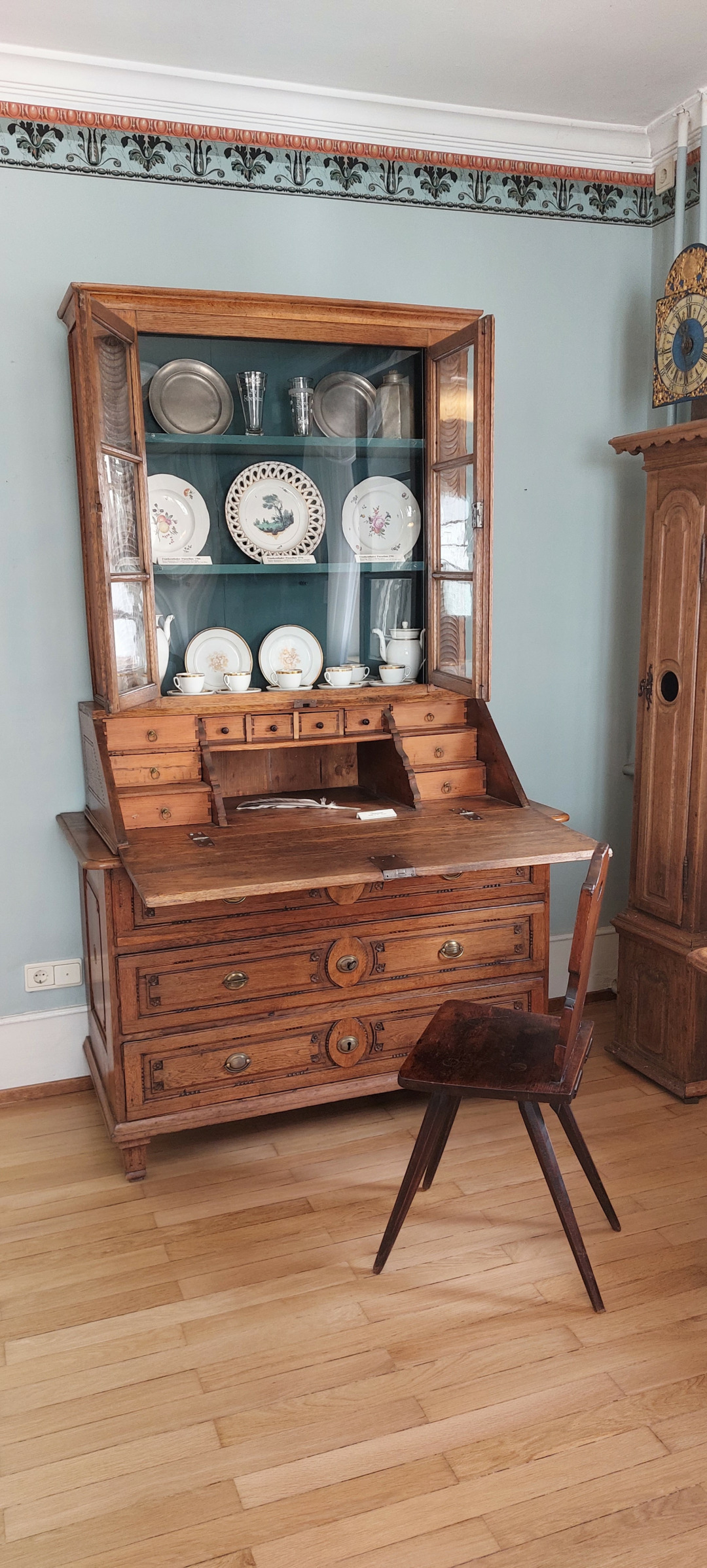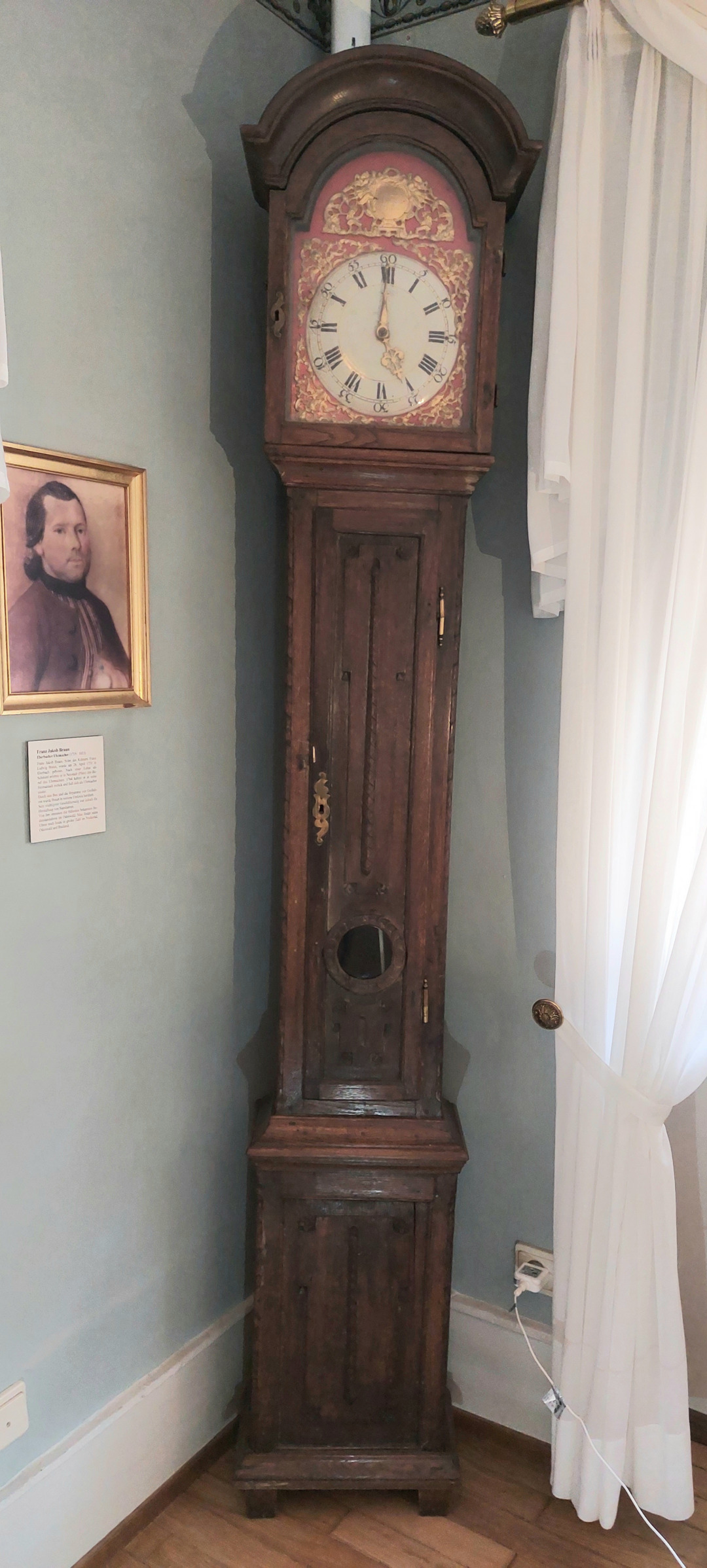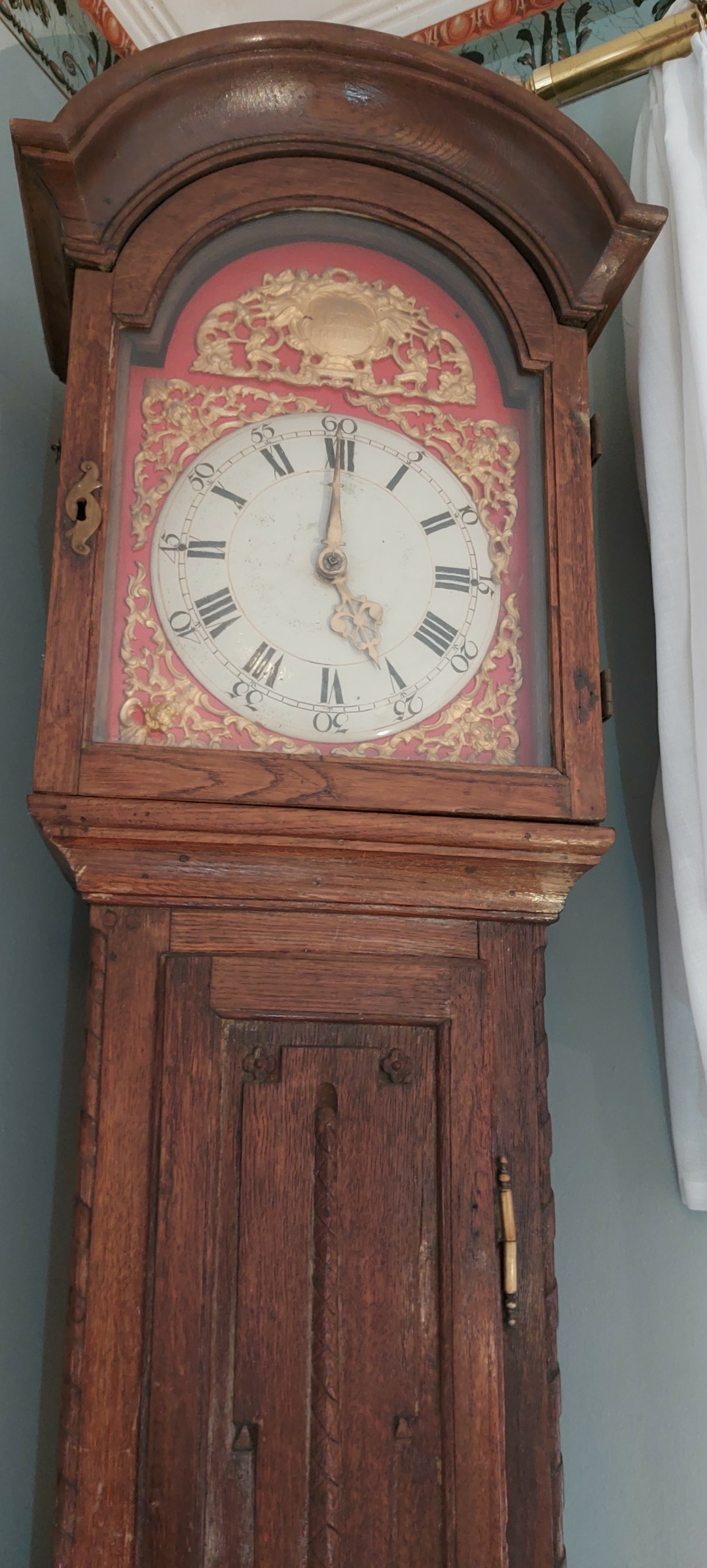
Furniture from the museum's old collection is presented here. They were created during the reign of the Electors Palatine Carl Philipp (1717 - 1742) and Carl Theodor (1742 - 1799). At that time, Eberbach and Mosbach to the east of Heidelberg belonged to the Electoral Palatinate. The wall decoration with the ceiling borders and the gathered muslin curtains is a recreation of domestic culture around 1800. Furniture inherited from previous generations was often preserved and incorporated into more modern furnishings. Oil paintings on the walls, pewter dishes and porcelain as representative decorative pieces in wealthy bourgeois families gave the visitor an indication of a certain education, of established family tradition, of respectability and reliability, important qualities and conditions for business acumen. In addition to pharmacists, doctors, merchants and councillors, the upper middle class in Eberbach also included a wine merchant. Priests, teachers and artists belonged to the educated class, but not usually to the rich. The living quarters of craftsmen, farmers and workers were more oriented towards practical use and usefulness than towards beautiful decoration.

The three-piece writing secretary and the grandfather clock are designed in the pigtail style of the late 18th century. The cabinet was made in Eberbach around 1780. The pedestal table still has baroque forms, it is made of oak, its table legs are connected with footboards. It was made around 1730. The chest of drawers and the armchair are made in a playful rococo style.

The oak grandfather clock in the corner on the right has a dial of enamel on a red background surrounded by gold coloured pewter ornaments.

It was made by the famous Eberbach clockmaker Franz Jacob Braun (1735 - 1813), who had first served an apprenticeship as a blacksmith, but then learned the clockmaking trade in Neustadt in the Palatinate. Around 1764 he lived in Eberbach again. Many tower clocks are by him, such as the old clockwork of the Eberbach Powder Tower or the old Rothenberg church clock.

The walnut armchair has carved floral decoration, it dates from the middle of the 18th century and was probably made in Hesse.